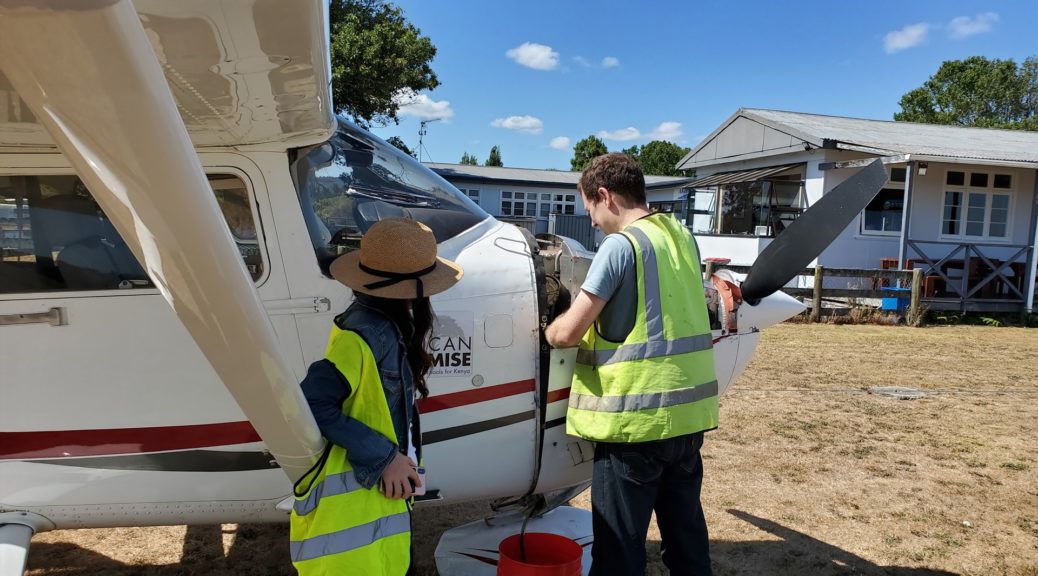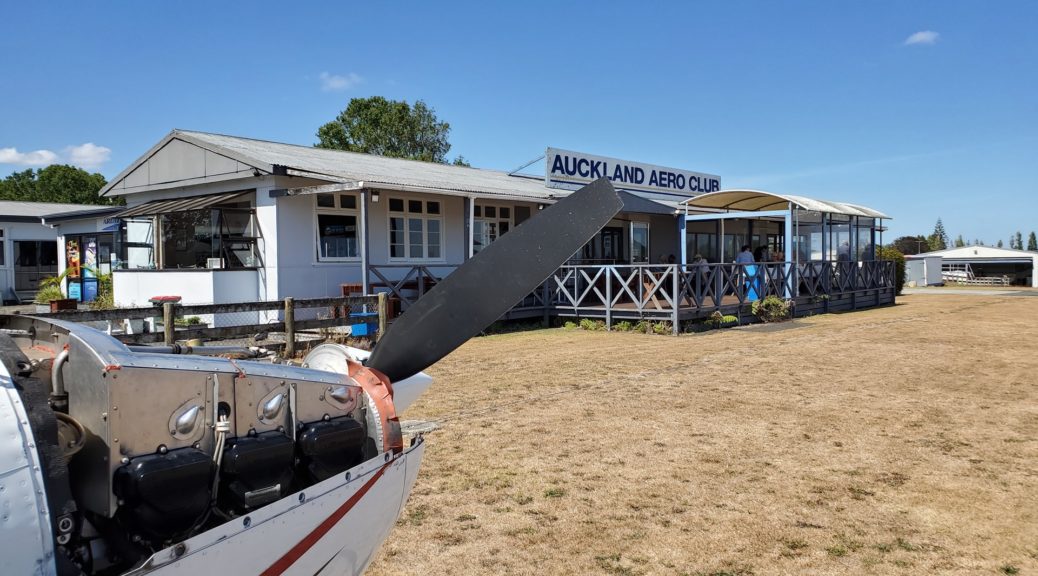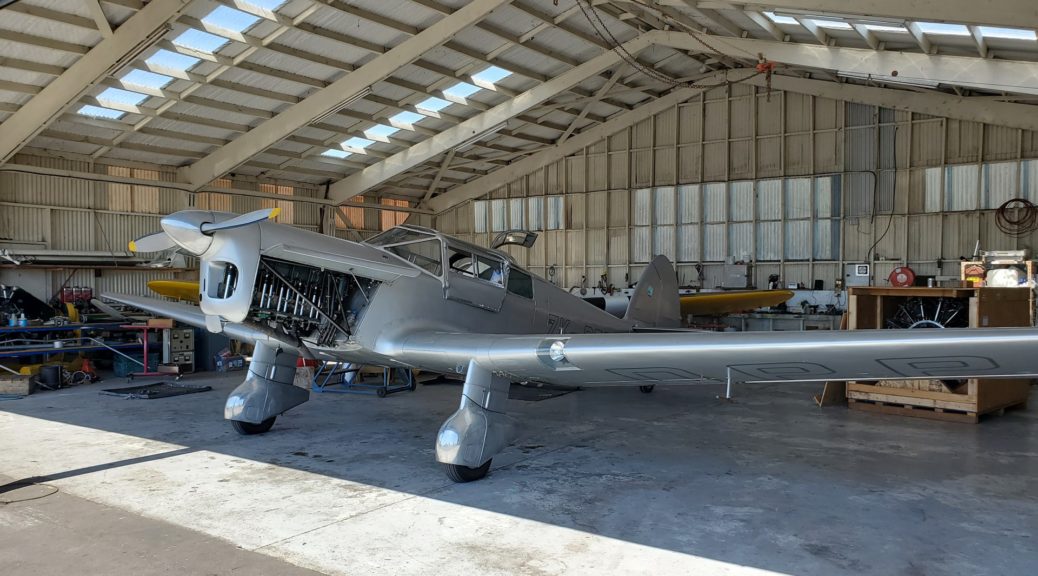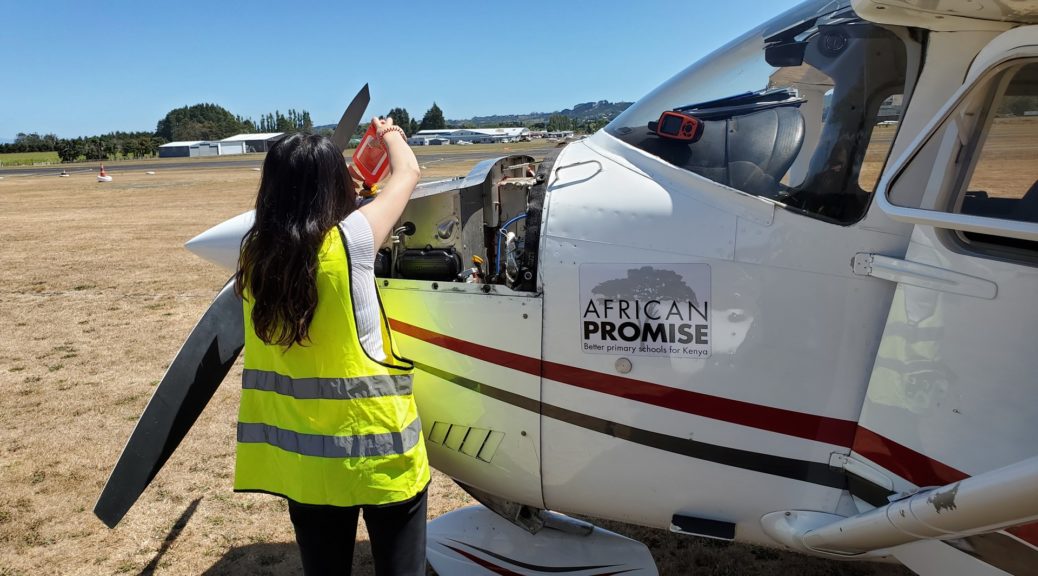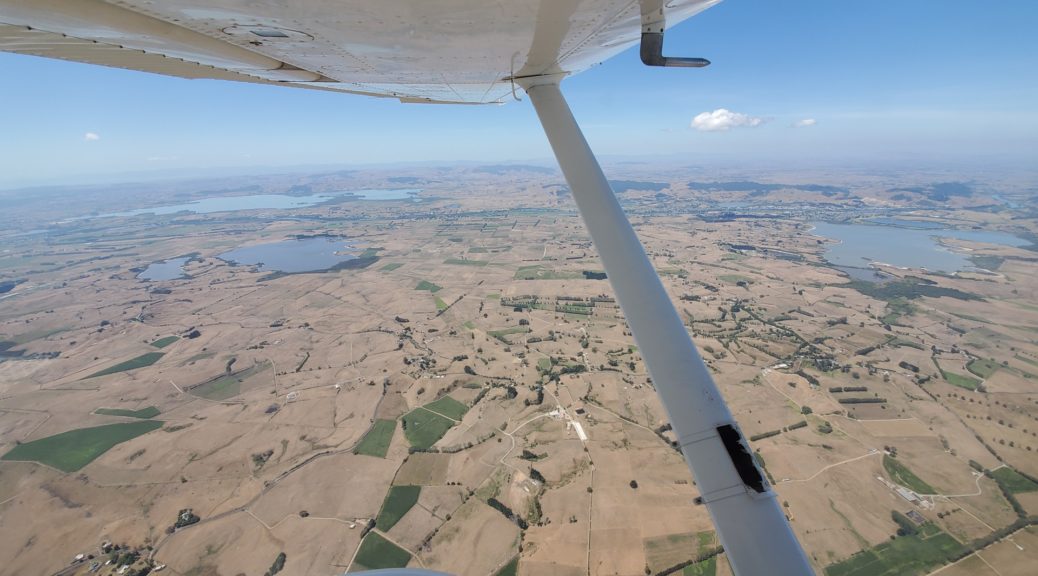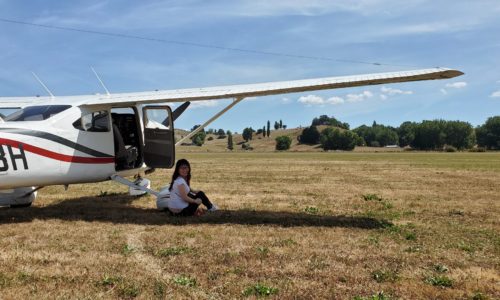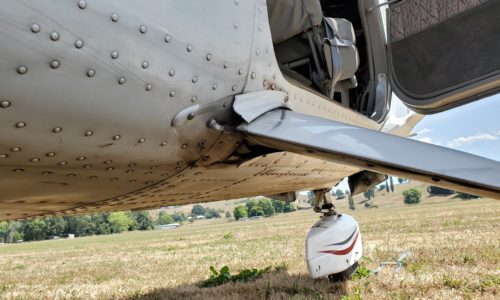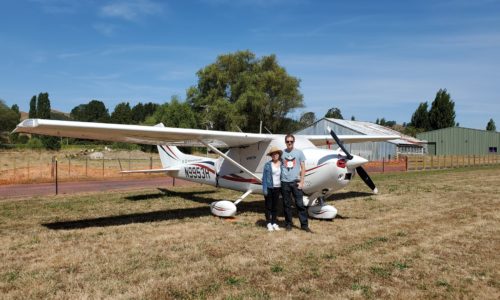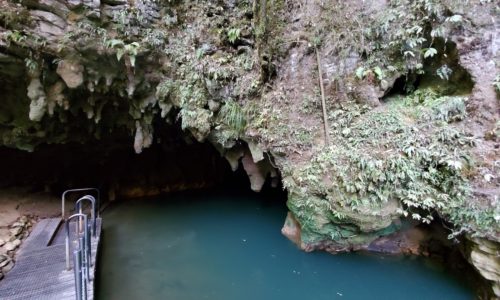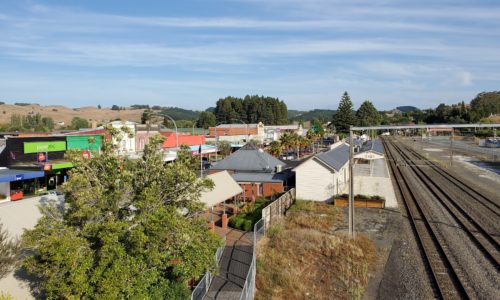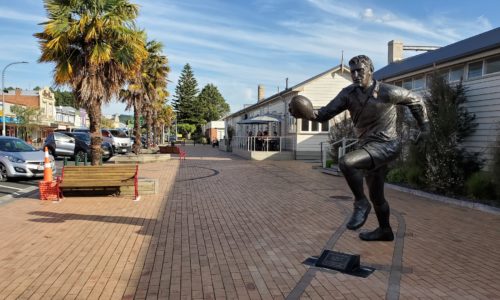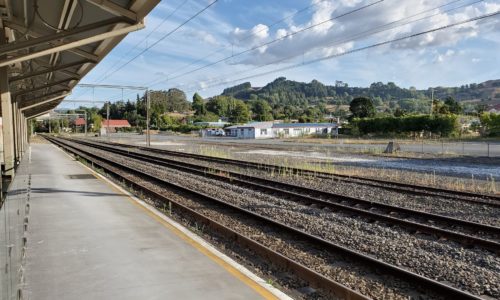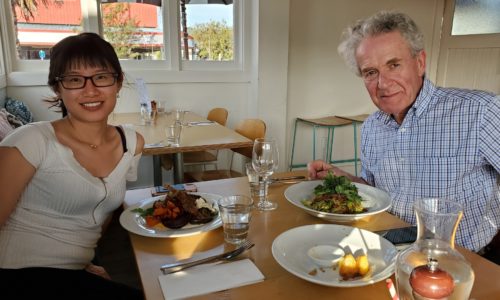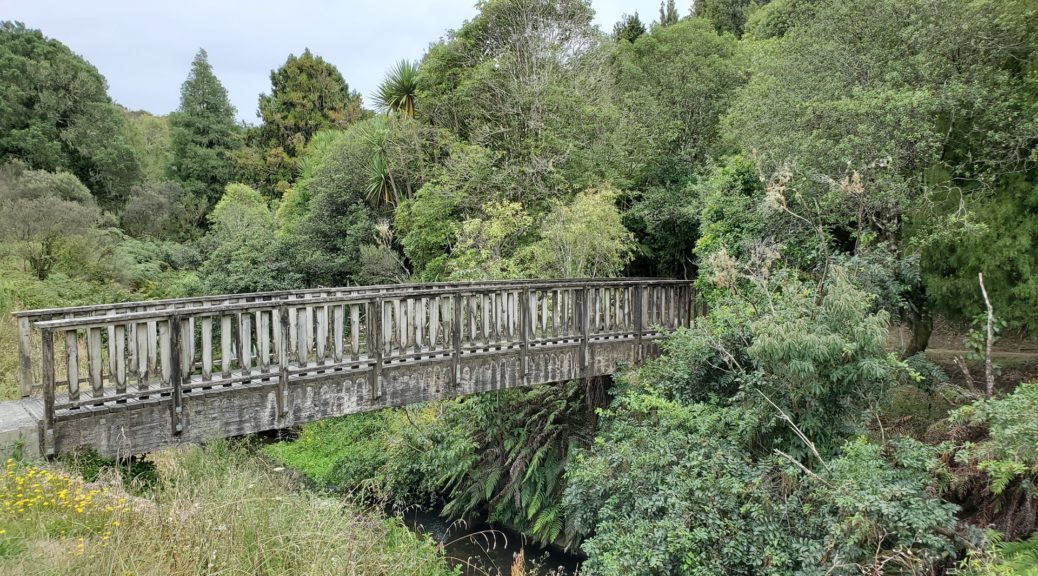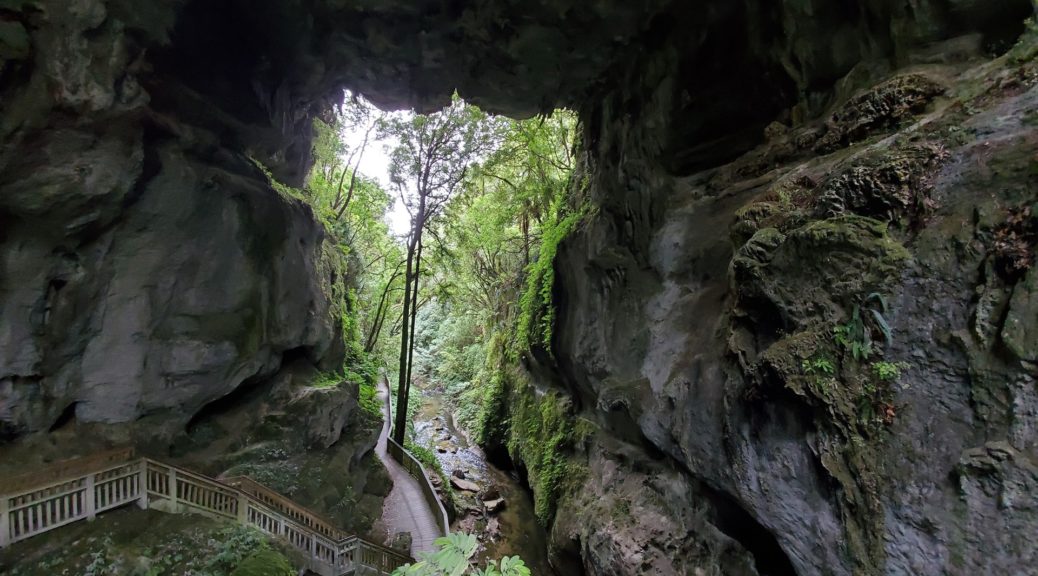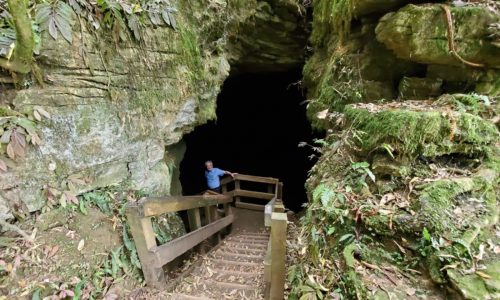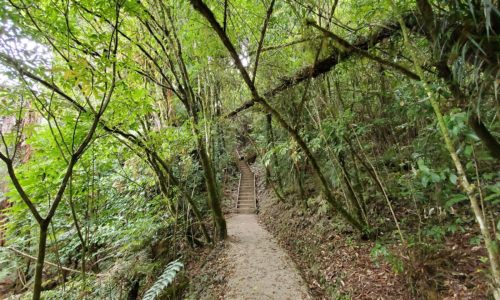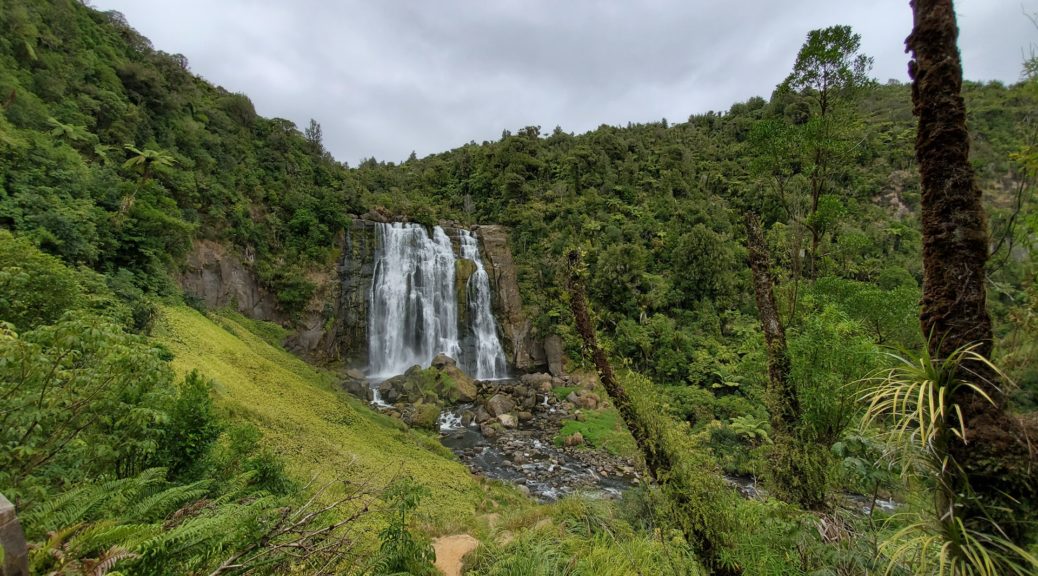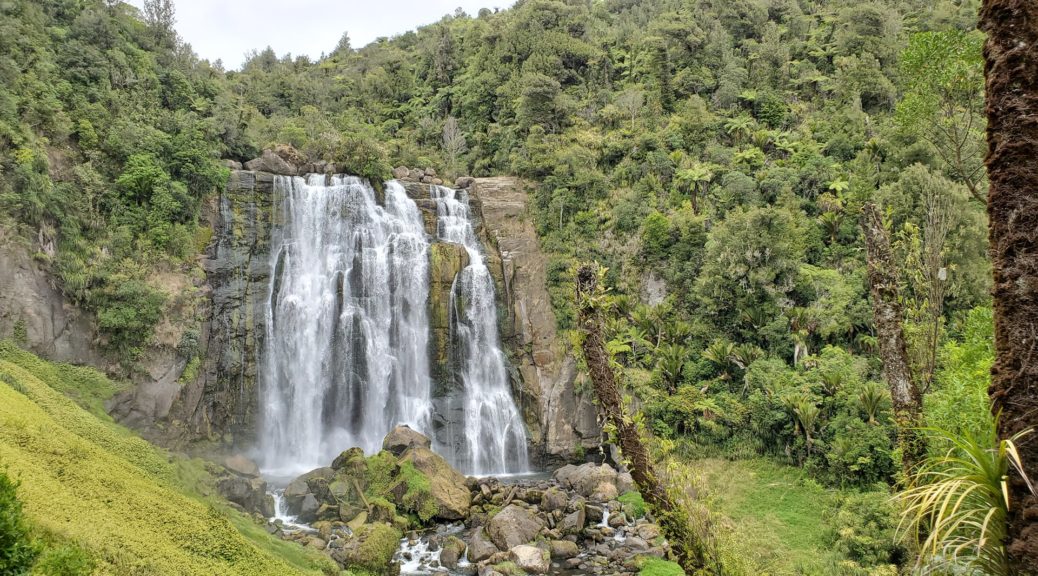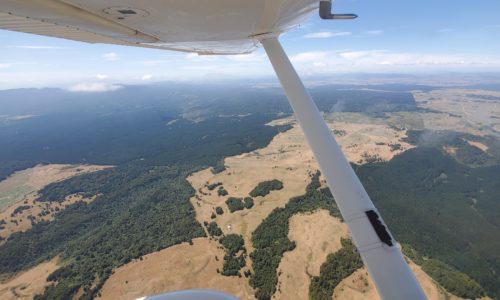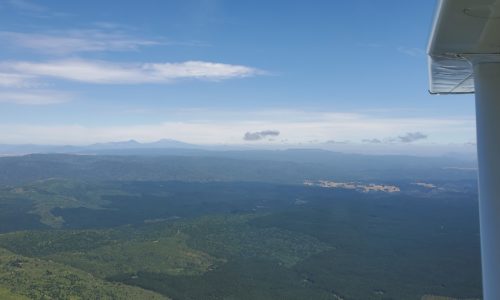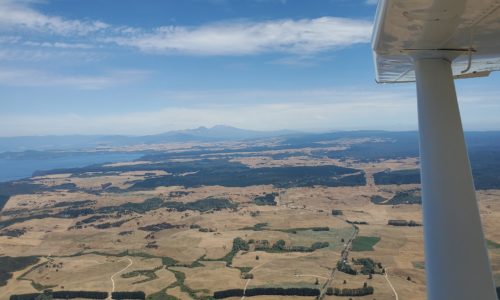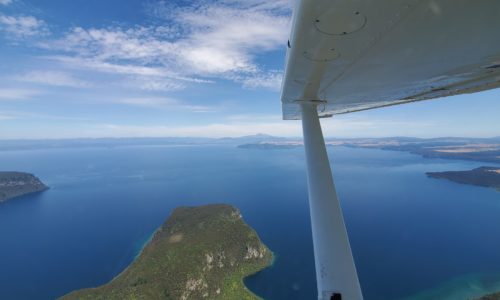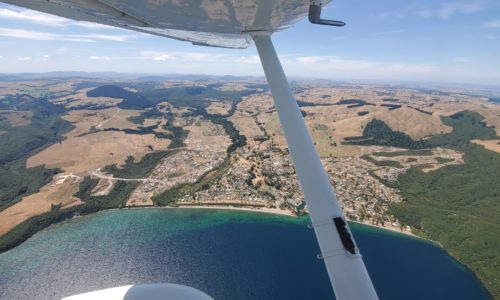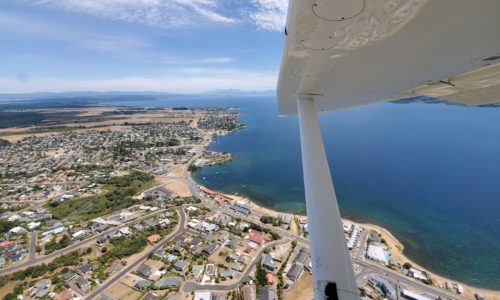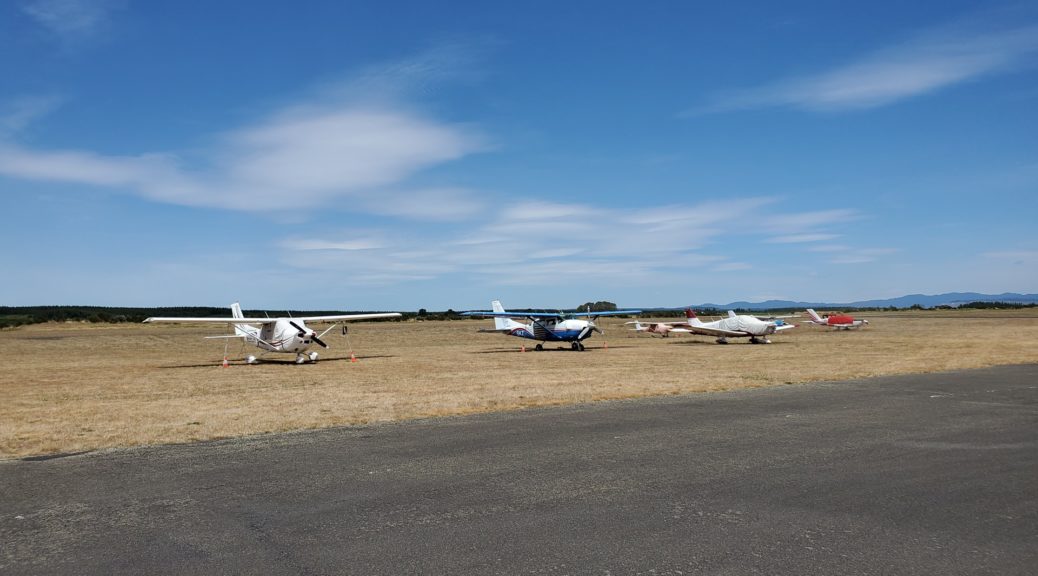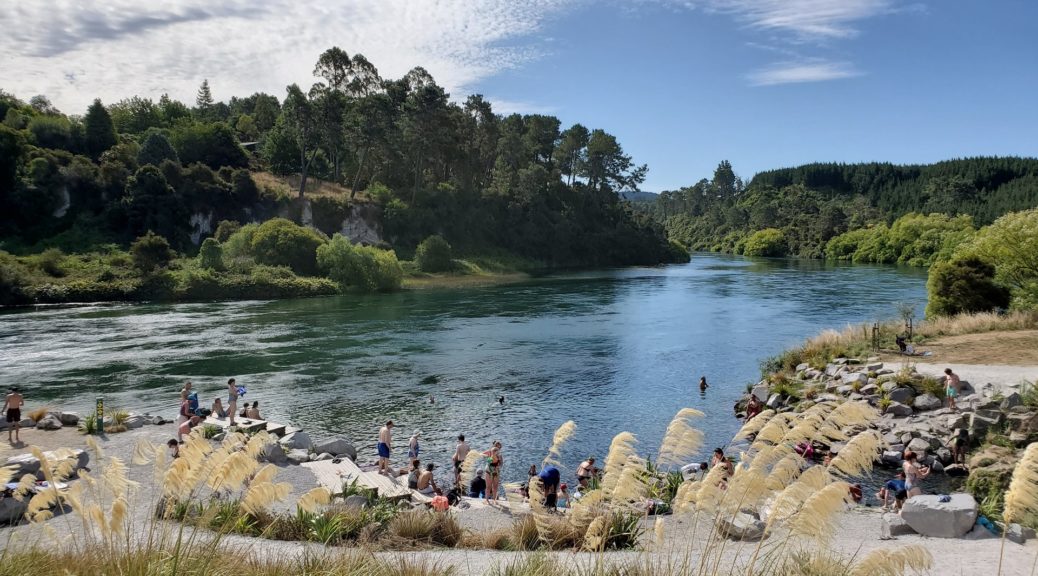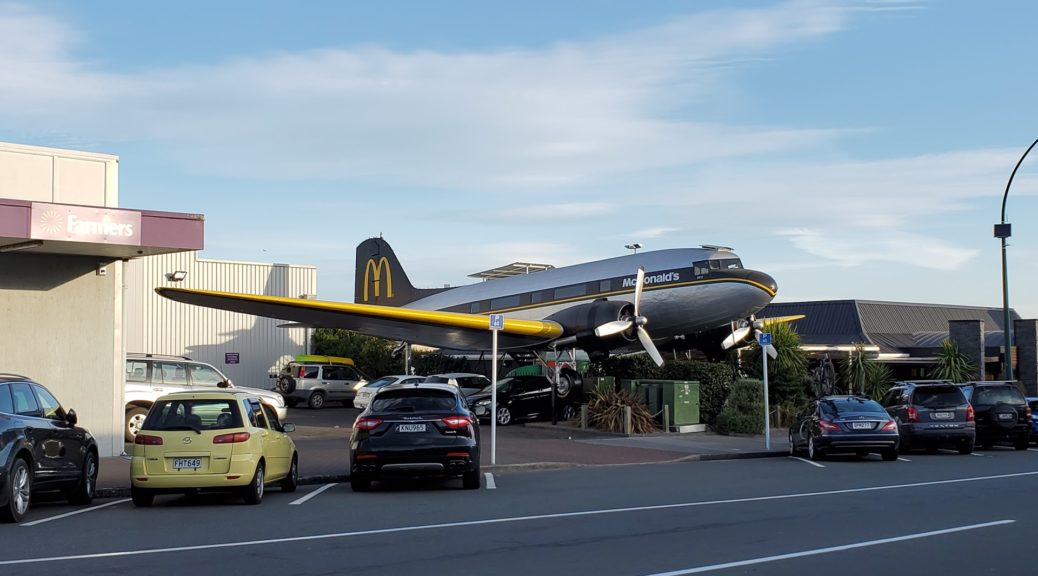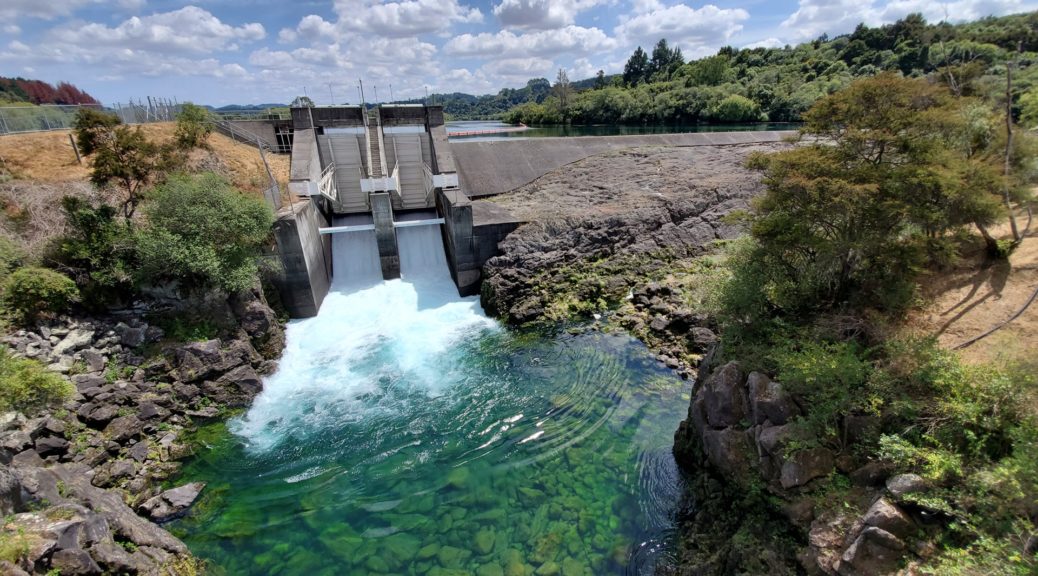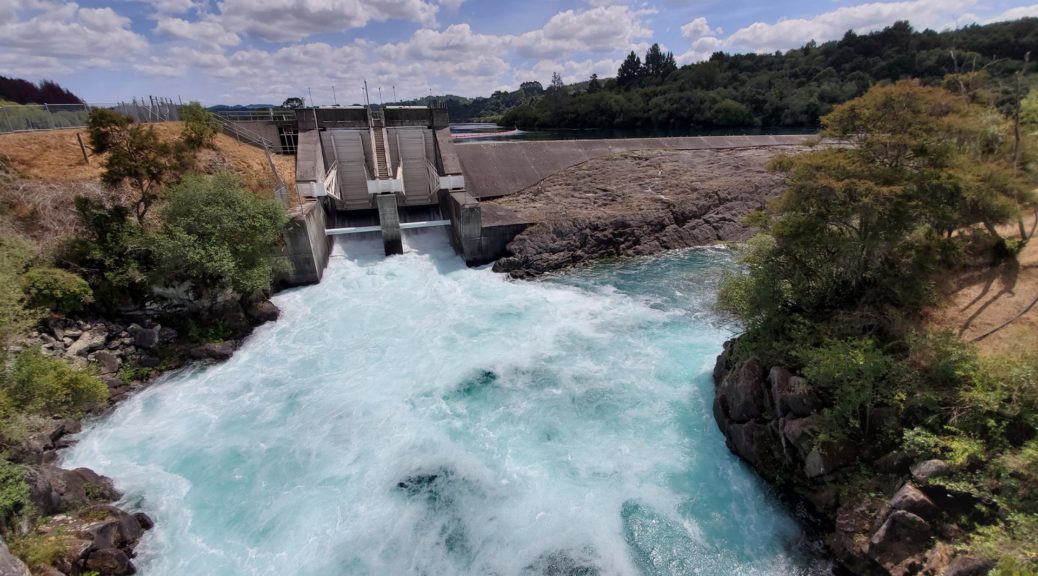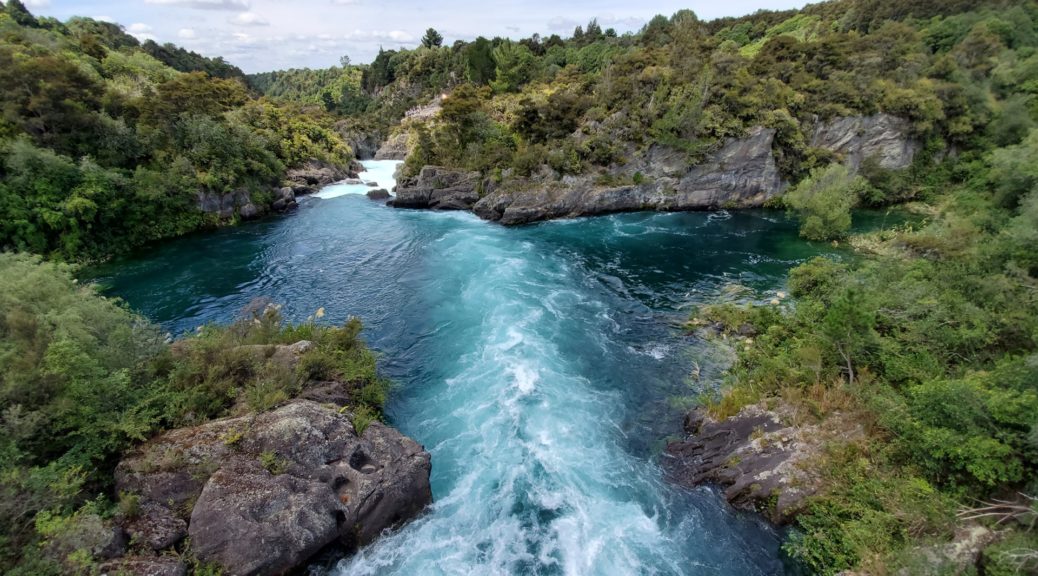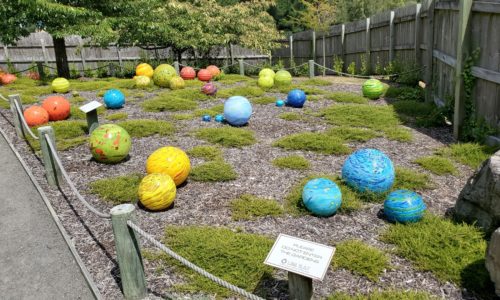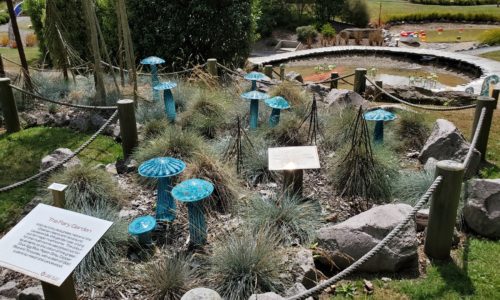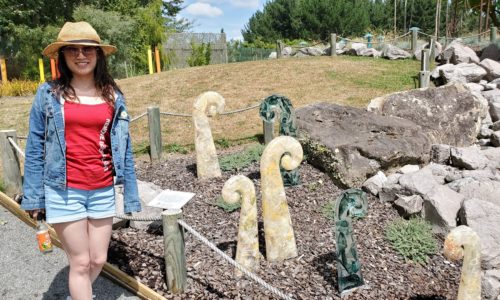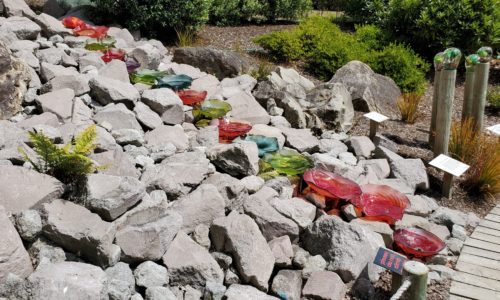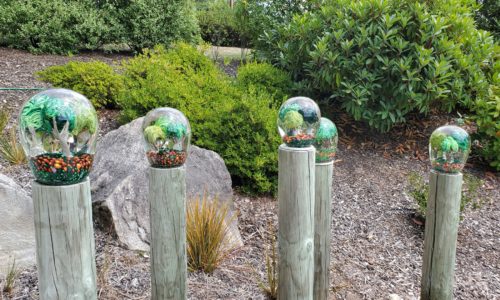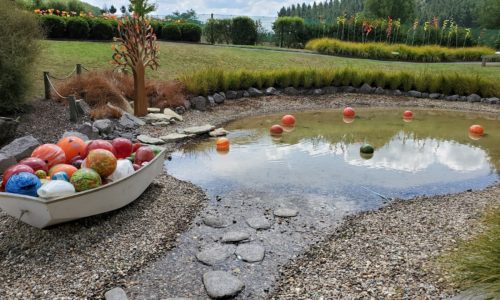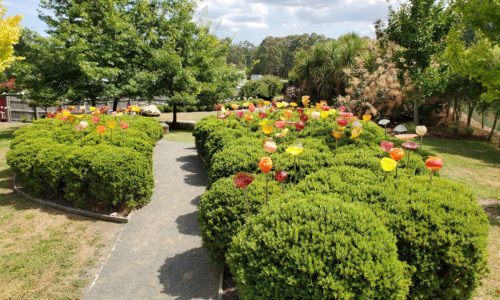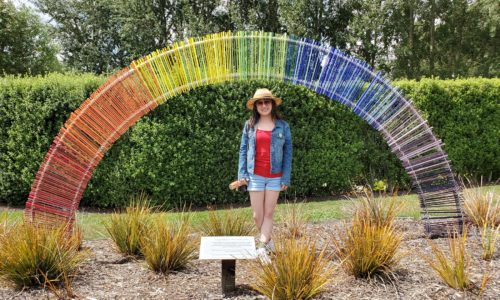Round the World – New Zealand Days 9 to 11
My father would be in New Zealand for all the time that we were; and my aunt would be flying in from Australia to join us for most of the time too. We had worked out a combined road trip / flying trip schedule, where we’d follow a similar routing and meet up every couple of nights. Our first destination after Auckland would be the small town of Te Kuiti, close to the famous Waitomo glow worm caves.
After a fairly late start, we loaded everything into the car and headed for Ardmore airport. It was clear that some items would need to be jettisoned, as we barely had enough space in the car for just the three of us and bags, let along once my aunt joined us! We parked up at the Auckland Aero Club and headed out to the aicraft. First task would be routine maintenance in the form of an oil change.
I ran up the engine to heat the oil, and then while the old oil drained my father and I went in search of fresh oil. I had a box of Aeroshell W100+ oil, but with a new or overhauled engine you need to use an oil with rather less lubrication and anti-wear additives, to help the piston rings seat and the engine break in properly. We found this up the road at the “Z” petroleum depot, in the form of a box of Aeroshell 100, and headed back to the club. Elsa refilled the oil while I found a temporary home for the spare engine cylinder and W100+ oil, and Dad started his drive south. It would take him about 3 hours; but only 40 minutes for us! We killed some time chatting to students in the club, and eating ice creams from the cafe, before starting up and heading south.

The weather was beautiful, true New Zealand summer. We stayed below 2,500′ after take off, to remain below the controlled airspace for Auckland airport; the thermals bumped us around, and we were pleased to be able to climb into smoother air after 10 minutes or so. The countryside was parched and dry; much of the country had been suffering from the same lack of rain as Australia had been. A notable exception was the west coast of the South Island, which had been pummeled by heavy rain and flash flooding, closing down the road to Milford Sound among others.
We soon descended in towards Te Kuiti. This airstrip is mainly used for agricultural aviation and has a slightly weird runway, being mostly grass with a thin center strip of asphalt for about 2/3rds of the length, and this strip being extended one way by a couple of hundred meters of gravel. They had made a real effort to use as many different runway types as possible. We landed just ahead of a training C172, which like many of the 172s in New Zealand turned out to be diesel powered. They were on a cross-country training flight from one of the schools at Ardmore.
Dad was stuck in traffic, so we spent a lazy hour relaxing in the shade under the wing, on the grass. While doing this I noticed that half of a plastic fairing had gone missing, where the right hand landing gear attached to the fuselage. I snapped a couple of pictures and sent them off to my mechanic Jason in the US for his opinion. Shortly afterwards, my father arrived, and we set off to the glow worm caves.
The glow worm caves are thought to have been discovered by local Maori in the late 1700s, and were shown to English surveyors Laurence Cussen and Fred Mace in 1884. They made extensive surveys of the caves in 1887 and 1888. Local Maori chief Tane Tinorau and his wife Huti opened the cave to visitors shortly afterwards, having discovered the upper entrance to the cave (now the visitor entrance); the lower entrance (current visitor exit) is where the river enters the ground, while the upper is dry.
The tour starts with a walking route through the upper caves, and continues with a boat trip through the main glow worm sections. No pictures are allowed, in order to maintain appropriate light levels for the glow worms (and probably to avoid everyone being irritated by constant glowing screens and flashes).
That evening we walked across the railway tracks into the town center, past the statue of famous local Rugby hero Sir Colin Meads, to dinner at a restaurant in the old rail station building. The food and cocktails were excellent, although we were all a little startled half way through the meal by a small bird flying at high speed into the window above Elsa’s head and ending up on the seat next to her. It was clearly very dazed as it didn’t struggle at all when my father picked it up and carried it outside, but was gone when we checked again later; it had either recovered and flown off, or been eaten, I suppose.
The following morning we were set to go our separate ways for a while. My father would drive west, towards the coast, and Elsa and I would fly east to the city of Taupo. Neither of those trips would take too long, however, so we spent the morning visiting a few of the local scenic spots; a river canyon with rock arch, another (much smaller) cave, and finally a stunning waterfall.
The drive to and from them took us down the most winding roads we’d ever experienced! After lunch at the glow worm caves on the way back, we returned to the airport.
Our first task was an inspection of the aircraft’s landing gear. My mechanic had replied to my photo of the broken fairing saying that it was probably not an issue, but could be a symptom of a broken landing gear bolt. We pulled back the carpet and unbolted a couple of inspection panels to check; it wasn’t the easiest thing to see, but everything seemed to be fine as far as we could tell. We spent a fruitless ten minutes looking for the “honesty box” for landing fee payment, that the airport charts reported should be by the fuel pumps; after giving up and phoning they council, they reported that the box had been removed a long time ago. Apparently nobody had thought to update the airfield information! They did mention that they knew we were honest, as they’d been watching us on CCTV wandering around looking for the box.
We took off from the very narrow strip of tarmac in the center of the runway, and headed east. Yet again, the weather was ideal. The flight was very short, and the beautiful Lake Taupo was in view almost before we finished climbing. Lake Taupo is a busy airport, with very active tourist skydiving outfits working, so there are strict arrival and departure routes to keep one clear of falling humans, with mandatory broadcasting of position and intentions. Happily, these procedures are all very clearly marked out on the airport information available online, and we had no trouble following the directions; approach brought us over the center of town, to land in a southerly direction, and taxi to parking on the grass. I tied down the aircraft in a conveniently empty tie-down bay (after asking the locals to see if it belonged to anyone) and covered him up for our two night stay.
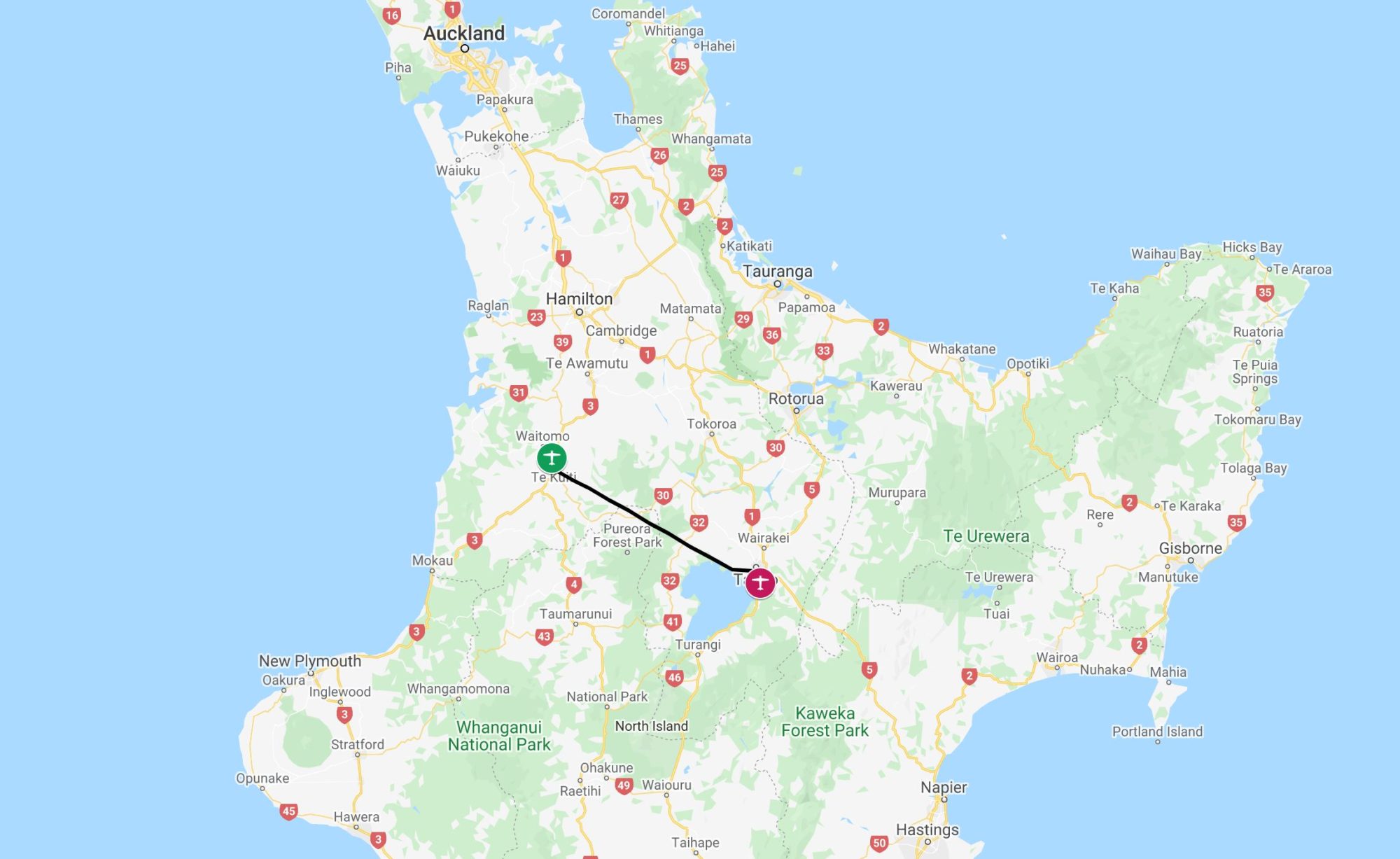
We grabbed our rental car from Hertz at the airport, and headed to our AirBNB. After a brief stop to unpack we headed out again, to a typically Taupo-style activity; hot springs. Just a short drive from the accommodation was the Spa Thermal Park, a large public park with a hot spring feeding into the river that runs along side it. It’s freely open to all and, apparently, very popular!
We parked, and I made the decision that clearly I didn’t need shoes just for a short walk down to the river. Fifteen very painful minutes, and a surprisingly long distance later, we arrived at the bathing area and settled in to soak. The springs were lovely, although the irregular mixing of hot water from the spring and cold water from the river meant an occasional very hot or cold surprise!
That evening we headed into Taupo for dinner at a local bar and grill. An interesting surprise was to run into a DC3 aircraft, entirely painted up in McDonald’s livery. I took this as a sign, and made sure to stop in for an ice-cream.
Our first activity the next day was to head into town for breakfast. Elsa filled up at a Chinese restaurant she’d spotted the night before, and we then walked a block to meet up with Barry Payne, Taupo resident and previous round-the-world pilot with his wife in their Piper Comanche.
Barry gave us some great tourist tips on what to do that day, so after brunch we said our goodbyes and drove out of town towards our first stop, the Huka falls. These dramatic falls are located on the Waikato River, downstream of Lake Taupo, and at peak times can flow more than 300,000 liters per second (~80,000 gallons). The river narrows as it enters a canyon, from 100m to 15m, and then proceeds down a series of small falls, ending up with a 6m drop into the lower river. At high flow times, the force of the water is terrifying!
From here we continued to another riverine attraction, the Aratiatia rapids. Situated further down the same river, these rapids dried up when the Aratiatia hydro-power station was constructed. Three or four times a day, the dam is opened and water flow through the rapids is restored to their previous level for 15 minutes at a time. Over about 5 minutes before each release, a series of increasingly urgent sirens are sounded, and once the release began we could see why; the volume of water released was incredible, and rose frighteningly quickly. Anybody down in the river bed would have been in a great deal of trouble.
Having had our fill of the rapids, we drove back along the highway towards Taupo, and pulled in to the “Lava Glass” studio. This glass studio was founded in 2002 and is mainly dedicated to creating glass art inspired by New Zealand’s many and varied landscapes. They also have a small cafe and a glass sculpture garden, which we spent an enjoyable 40 minutes or so wandering around. I particularly enjoyed reading the story of how they dealt with the glass globe that turned out to be too large for the cooling oven; while debating what to do, they ended up dropping it and thereby solving the problem more directly.
Click here to read the next part of the story.
